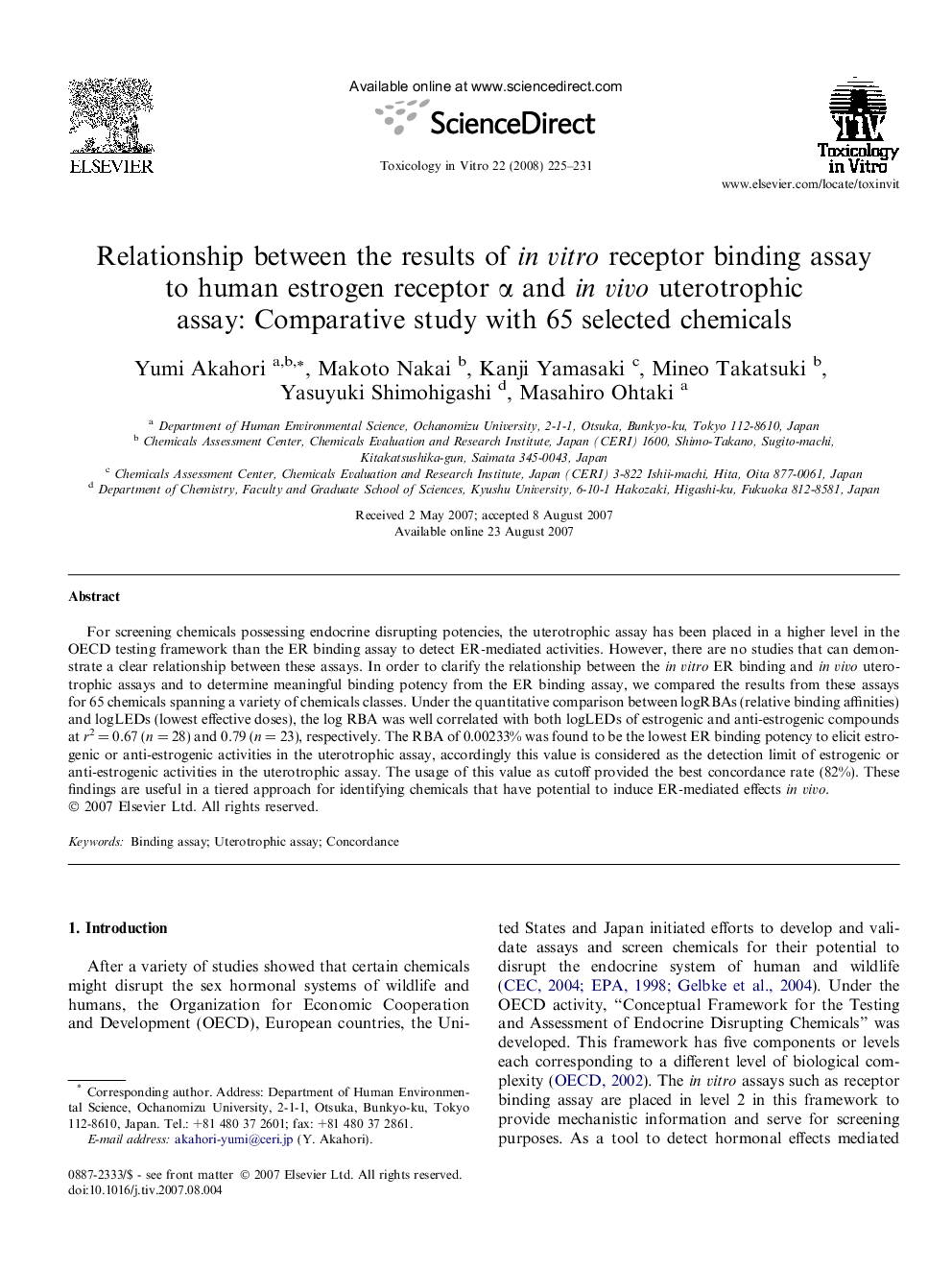| کد مقاله | کد نشریه | سال انتشار | مقاله انگلیسی | نسخه تمام متن |
|---|---|---|---|---|
| 2603636 | 1133827 | 2008 | 7 صفحه PDF | دانلود رایگان |

For screening chemicals possessing endocrine disrupting potencies, the uterotrophic assay has been placed in a higher level in the OECD testing framework than the ER binding assay to detect ER-mediated activities. However, there are no studies that can demonstrate a clear relationship between these assays. In order to clarify the relationship between the in vitro ER binding and in vivo uterotrophic assays and to determine meaningful binding potency from the ER binding assay, we compared the results from these assays for 65 chemicals spanning a variety of chemicals classes. Under the quantitative comparison between logRBAs (relative binding affinities) and logLEDs (lowest effective doses), the log RBA was well correlated with both logLEDs of estrogenic and anti-estrogenic compounds at r2 = 0.67 (n = 28) and 0.79 (n = 23), respectively. The RBA of 0.00233% was found to be the lowest ER binding potency to elicit estrogenic or anti-estrogenic activities in the uterotrophic assay, accordingly this value is considered as the detection limit of estrogenic or anti-estrogenic activities in the uterotrophic assay. The usage of this value as cutoff provided the best concordance rate (82%). These findings are useful in a tiered approach for identifying chemicals that have potential to induce ER-mediated effects in vivo.
Journal: Toxicology in Vitro - Volume 22, Issue 1, February 2008, Pages 225–231